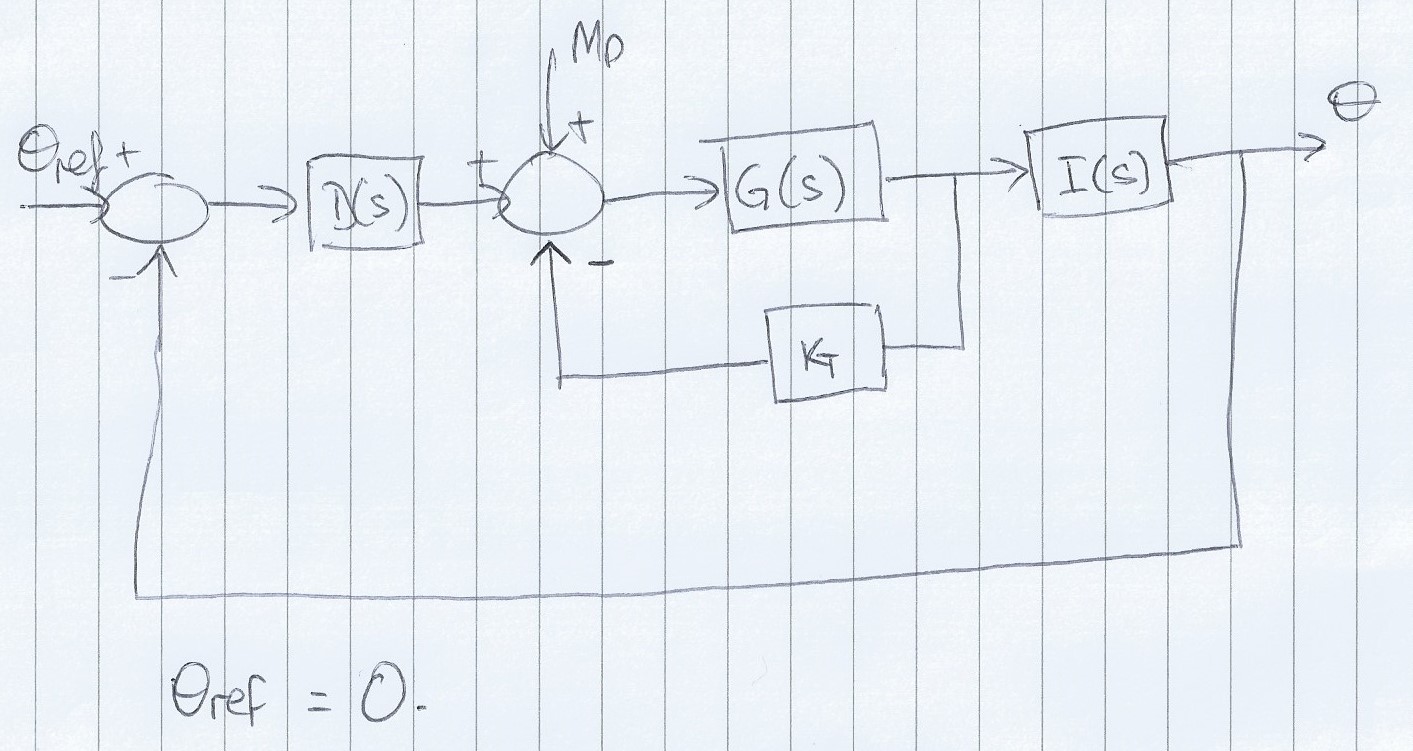I have a block diagram that I am trying to get the transfer function for but can't seem to figure it out, I am sure that I am making it more difficult than it needs to be but still can't get it. The diagram is below and any help would be great!
Edit
So far I have got myself to this point but I am unsure if it is correct:
$$\frac{\theta }{M_p}=\frac{G(s)(I(s)-K_t)}{1+D(s)G(s)(I(s)+K_t)}$$
I feel I should try solving the inner loop and then the outer but I can't work out how to put the inner loop in one function. Any ideas?


